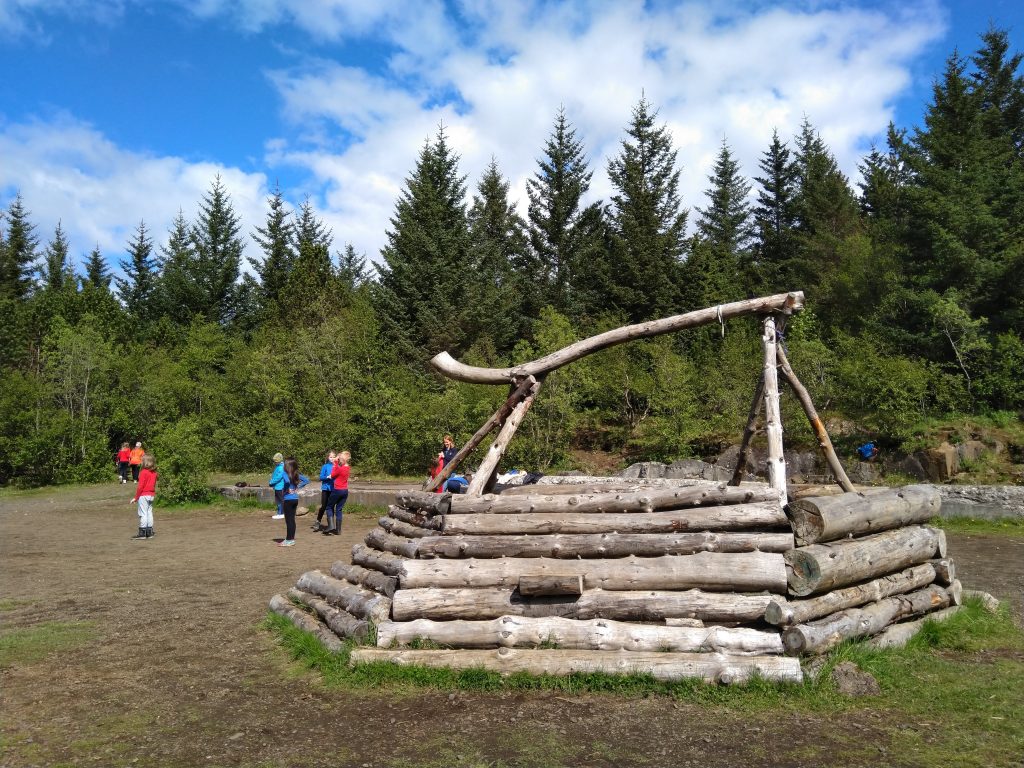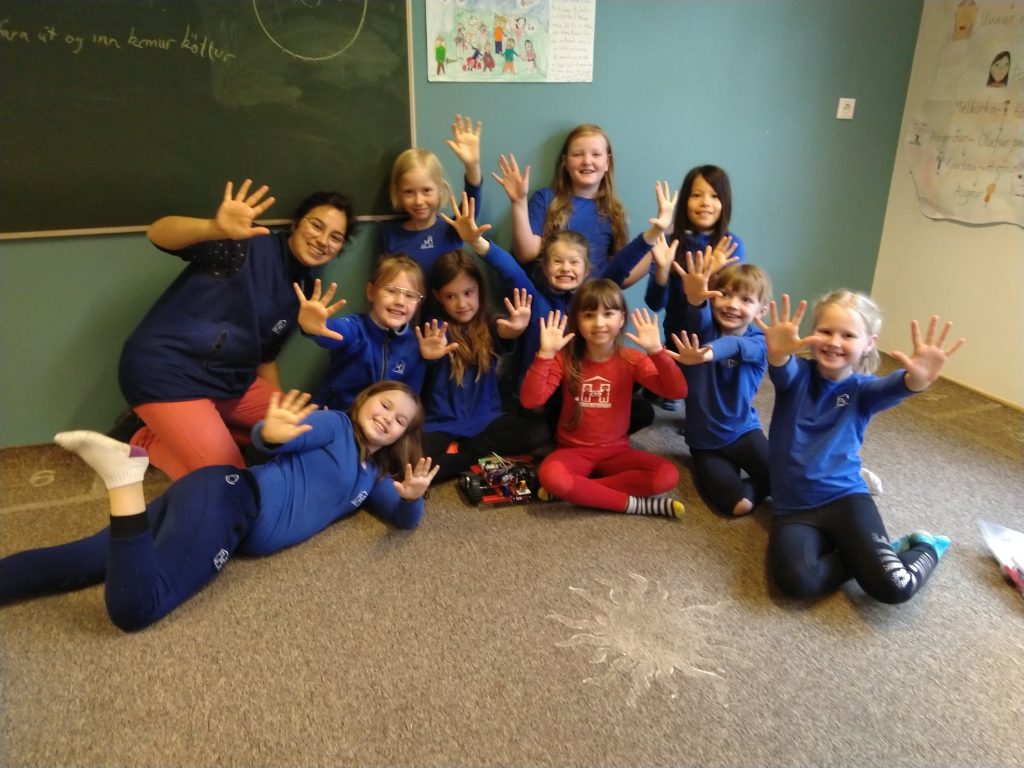
Gleðilegan miðvikudag <3 – Happy Wednesday. This is what you can read every day when you enter Hjallastefnan schools in Iceland. Schools where happiness and positivity reigns. But they also have another particularity. Hjallastefnan – or the Hjalli model (https://www.hjallimodel.com/) – fights for gender equality and counters gender stereotypes. It has now existed for 30 years and gathers 15 kindergartens and 3 primary schools (up to the 4th grade) across Iceland – the number one country when it comes to gender equality.
Here is a little overview of my visit to both a kindergarten and a primary school from the Hjalli model in Reykjavík. As a part of The Danish-French School’s exchange program for teachers, I wanted to discover their methods, get inspired, and use this opportunity to see the different interest in STEM for both genders.
The first impression you get when you read about the model is gender separation and uniforms. This seems a bit old school, but it is anything like that when you see the actual practice.
The uniforms are here to make every kid equal. Whether red or blue, skirt or trousers, it’s all the same, for everyone. Your boy wears a red skirt? No problem.
The gender separation is not strict either, and they get mixed at least once a day. They separate them to work on gender weaknesses and reduce inequalities.
We are all “friends” there. You talk to someone else by using the expression “Dear friend” – “Kæri vinur” for a boy and “Kæra vinkona” for a girl. Even between adults. “Góðan dag kæra vinkona Joséphine!” – the teachers were telling me in the morning. And don’t forget the heart when you write a message. The post-its are heart-shaped too of course.
Messages should also always be turned in a positive way. A child talks too loudly during lunch? Just tell “Dear friend, use your mouth for eating”. Another starts getting violent? “Dear friend, use your words”. And it works. They get used to receive and give positive messages from the youngest age, and train all in a circle to use this kind of formulas.
The atmosphere is also very quiet. Children have an inside voice and an outside voice. They are often in small groups, and they use a meditating position when sitting in a circle. And boys have for example smaller rooms, so it is harder for them to run around and make noise.
Finally, their environment is very simple and natural, so that the children use their imagination during playing time. Only a few games are available, including wood cubes and homemade clay. In the playground, no big structures nor swings. In the kindergarten they have sandboxes, sheds, ropes, big tires and a wading pool for when it rains. In the school, they just use the forest as a playground.

So, how does it work on a daily basis? The children are gathered in groups of the same age and same gender. Each group has its own classroom and teacher. In the corner, a big carpet with a sun in the middle has numbers all around for the children to sit on. They all start the day by singing good morning to the sun, the trees, the flowers, and every single child in the room. The rest of the day is a mix of “hópatímar” – group time – “valtímar” – activity of their choice – and “blöndum” – mixing the genders. Each of these has its own song that the group sing together, like a jingle in a TV show.
- Hópatímar: The teacher takes the group for some activities or teaching, either in the classroom or outside. The youngest work mostly with countering the gender stereotypes here. The girls work on their strength and power, making some physical exercise, climbing on chairs, and learning to express themselves loudly and clearly. With the boys, it’s a completely different atmosphere. They work on their gentle hands, giving hand massage with lotion to each other, brushing their hair, and putting nail polish on. The groups also do compliment rounds. Girls tell each other “You are strong!” or “You are wonderful!”, while boys are more like “You have a good heart!” or “You have beautiful eyes!”. As the children get older, these group times are more and more used for conventional teaching.
- Valtímar: One by one, the children choose between different playing or creative activities. This can be Kapla, clay, crochet, Lego, going outside, drawing, or even chess (They start chess lessons from 3 and some 5-year-olds are going to the European championship this summer). The teachers make sure that each activity has 2 or 4 children, so there is always a playmate to be with. When the capacity of children is reached, the activity becomes unavailable for the rest of the group.
- Blöndum: Boys and girls of the same age get together and do activities in pairs. Because of the gender training that they do separately, they seem to work more easily together as equals. When building a structure with blocks, girls don’t hesitate to take the leadership while boys try to make things pretty. The older they get, the more often the gender are mixed. Blöndum also exists as a multi-age version.

Let’s talk about STEM. Icebot, a rover from the Dark Side Challenge made by one of our 8-year-old girl and her mom (http://blog.ecolefrancodanoise.dk/model-moms), was also part of the trip. It has been presented to the 8-years-olds, girls and boys separately. The goal was to see if the two genders have a different interest in robotics. And the answer is yes.
From the girls’ side, they see the robot like a tool that they can control. And they want to be good at it. Trying one by one, they manage to send the rover where they want with the minimum effort and take a picture of their friends. One girl will also stay for the whole time next to the computer to explain to the other ones how it works. They were simply organized and efficient. But they were not so curious about how it works concretely. They saw it as a product that works, and they have fun with it by completing simple goals.
Let’s go to the boys now. They first have many questions about every component and how it works. They use their imagination to have a super robot. One wants to send it to space. Another wants a mechanical arm to bring soda cans. They also want to make it prettier. They see a final product that doesn’t exist yet. Then they try it. It becomes much more chaotic than the girls, and they keep trying the commands without any plan. They just want it to keep moving, for fun. They’d also rather move themselves to take a picture than the robot.
When it came to the feedback, both groups were super enthusiastic and kept asking about having their own (We should hopefully send them one by the end of the summer holidays). If the groups were mixed, I would imagine that the boys would take control and make the robot move constantly, while the girls would let go and lose interest as they won’t have the opportunity to master the commands and find out concrete goals. Separating them can therefore be an advantage to trigger girls’ interest in STEM.

This experience was really enriching, and I hope to collaborate with them again. I’ve met blooming children and welcoming teachers. Have a good day, my friend!